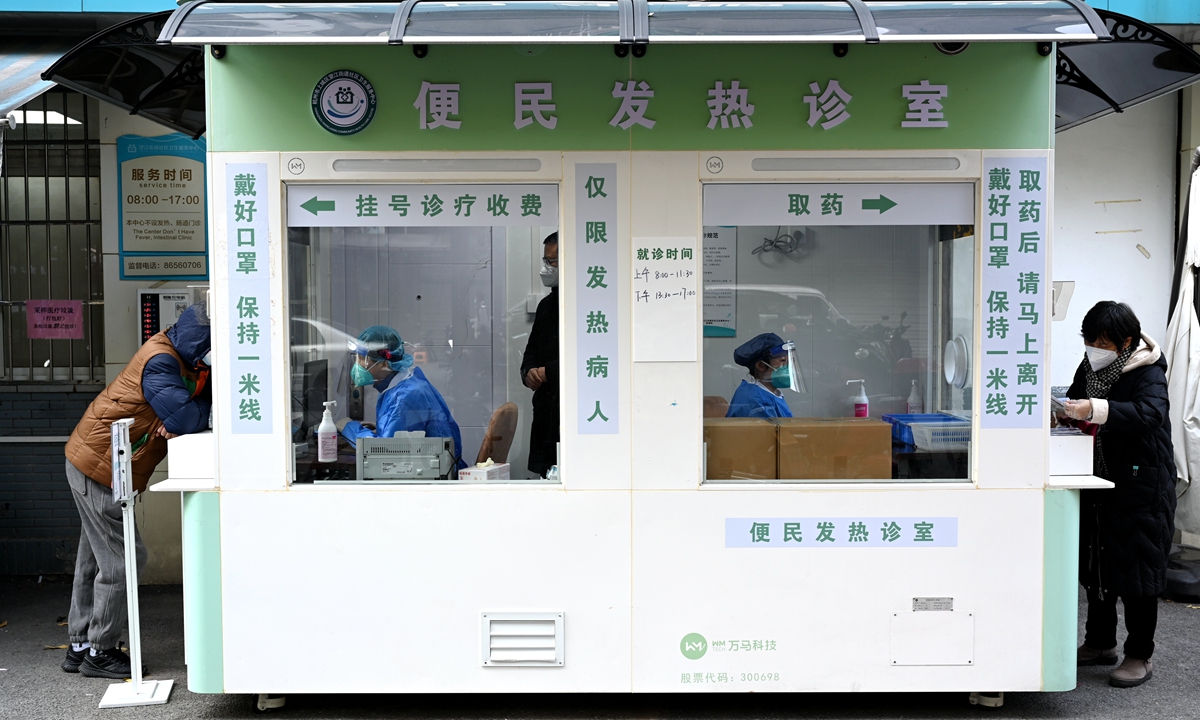Daily new COVID infections in Zhejiang reach over 1 mln, peak expected with 2 mln daily around New Year’s Day

Residents visit a fever clinic transformed from a sampling kiosk of nucleic acid testing in Hangzhou, East China's Zhejiang Province on December 22, 2022. Photo: IC
With daily new infections surpassing 1 million, the COVID-19 epidemic in East China's Zhejiang Province is expected to peak earlier around the New Year's Day and enter a high-level stage with the highest daily tallies reaching 2 million, local authorities said on Sunday.
The highest number of daily visits paid to fever clinics across the province reached 408,400 over the past week, 14 times the usual number of visits to fever clinics in the province, Yu Xinle, deputy director of the Health Commission of Zhejiang Province, said during a press briefing on Sunday afternoon.
Based on the recent case monitoring and sampling surveys in communities, the authorities predicted that the infection will peak ahead of anticipation around the New Year's Day and enter a week-long plateau with daily new infections reaching 2 million.
At present, a total of 13,583 COVID-19 patients are receiving treatment at hospitals in Zhejiang including one critically ill patient in stable condition and 242 severely or critically ill patients caused by underlying diseases.
As of Saturday, a total of 6,595 fever clinics have opened to the public across the province. The maximum daily capacity of fever clinics in the province has reached 600,000 patients.
Besides, the province has prepared 101,082 beds at the designated and sub-designated hospitals across the province. A total of 1,600 new ICU beds have been set up across the province. The number of ICU beds for severe patients at third-tiered hospitals or above across the province has reached 12,398, 9.9 percent of the total beds available.
The province will expand the personnel for 120 emergency service, with the capacity to be expanded to five times the current scale or above.
Besides, the province will further improve the facilities of ambulances including monitors, defibrillators and ventilators, assuring that a certain number of ambulances within each jurisdiction have the capacity to transport critically ill patients.
Besides, the connection and coordination between 120 emergency service and medical institutions will be strengthened to ensure rapid transport and treatment capacity for patients.
According to the authorities, the supply of cold and fever-reducing medicine in Zhejiang has increased, and the tension in medical institutions has eased.
In terms of drug distribution, local governments have also given priority to grassroots medical institutions.
According to the data monitoring, the number of patients with fever visiting fever clinics in the province has begun to decline, and the proportion of patients with fever visiting grassroots hospitals has increased from 20 percent to 44.7 percent.
The local authorities assured the public that the current medical treatment capacity in Zhejiang is in the affordable range in general and next step, the authorities will pay close attention to the epidemic development and people's needs to work with the local residents to survive the peak of the epidemic.
Global Times


